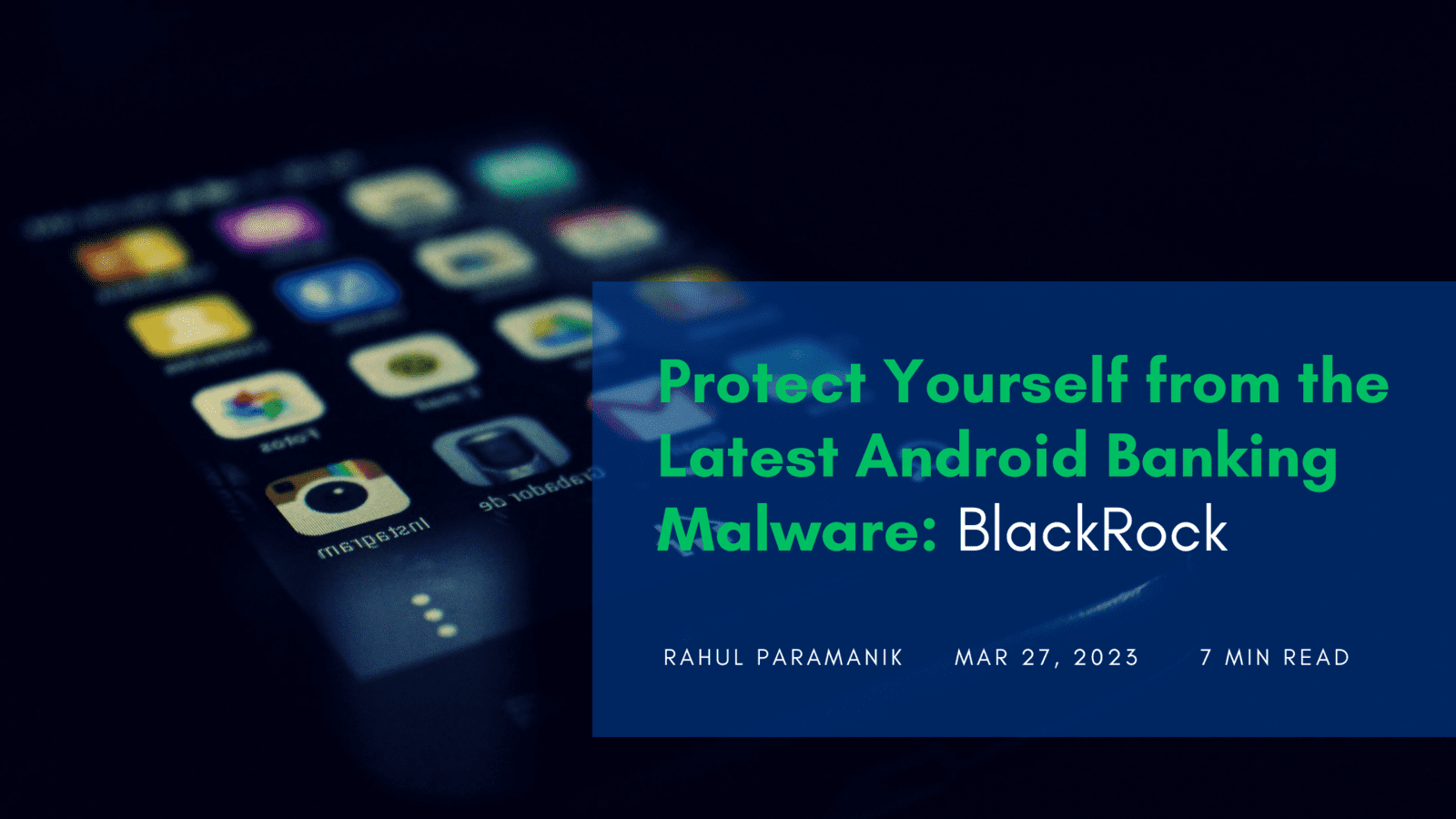
In recent years, mobile banking has become increasingly popular among consumers, providing them with greater convenience and flexibility when it comes to managing their finances. However, with this rise in mobile banking comes an increase in security risks, as cybercriminals target vulnerable mobile devices with malware designed to steal sensitive financial information.
Recently, a new Android banking malware has been discovered that is capable of attacking over 400 financial apps, putting millions of users' personal and financial information at risk. In this article, we will explore the details of this malware and provide tips on how users can protect themselves from becoming a victim of such attacks. The malware, dubbed "BlackRock," was first discovered by ThreatFabric, a cybersecurity firm that specializes in mobile threat intelligence.
According to their research, BlackRock is based on the code of another infamous Android banking malware, Xerxes, which was developed in 2019. However, BlackRock has been modified and improved to evade detection by security software and take advantage of the latest features in Android.
BlackRock is designed to target mobile banking apps, cryptocurrency wallets, and other financial apps, including popular ones like PayPal, Coinbase, and Wells Fargo. Once installed on a victim's device, the malware can overlay fake login screens on top of legitimate apps, capturing the user's login credentials and other sensitive information such as credit card numbers and personal identification numbers (PINs).
The malware is also capable of intercepting SMS messages, allowing it to bypass two-factor authentication measures that rely on SMS codes to verify the user's identity. This means that even if a user has set up two-factor authentication on their banking apps, it can be easily bypassed by BlackRock.
In addition to financial apps, BlackRock can also steal data from other apps such as social media and messaging apps, giving cybercriminals access to a wealth of personal information that can be used for further attacks.
So, how can users protect themselves from falling victim to this type of malware? Here are some tips:
One of the most effective ways to protect yourself from malware is to download apps only from trusted sources, such as the Google Play Store or the Apple App Store. These app stores have security measures in place to detect and remove malicious apps, so the risk of downloading malware is significantly lower.
Another important step is to keep your device's operating system and apps up to date. Software updates often contain security patches that address known vulnerabilities, so it's essential to install them as soon as they become available.
Two-factor authentication is an important security measure that can help protect your accounts even if your login credentials are compromised. However, as we have seen with BlackRock, SMS-based two-factor authentication can be bypassed by malware. Therefore, it is recommended to use alternative methods such as authentication apps or security keys.
Cybercriminals often use phishing techniques to trick users into revealing their login credentials or downloading malware. Be cautious of messages or links from unknown sources, and always verify the authenticity of the sender before clicking on any links or downloading any attachments.
Finally, installing a reputable mobile security app can help detect and remove malware from your device. These apps can also provide additional features such as anti-phishing protection and privacy scanning. In conclusion, the rise of mobile banking has provided greater convenience for users, but it has also increased the risk of cyberattacks. BlackRock is just one example of the many threats that exist in the mobile banking landscape. By following the tips outlined above, users can take steps to protect themselves from becoming a victim of these attacks and keep their personal and financial information safe.

